
by admin | Jan 4, 2024 | Osteoarthritis, Exosomes, Mesenchymal Stem Cells, Stem Cell Research, Stem Cell Therapy
Osteoarthritis (OA) is a chronic joint condition that causes pain and lack of mobility through the progressive degradation of joint cartilage. While there are several current pharmaceutical, physical therapy, and surgical treatments to address the symptoms of OA, researchers are interested in developing new therapeutic treatment approaches to address the relentless progression of the condition.
Considering their documented biocompatibility, immunomodulatory properties, and ability to precisely target specific cells and tissues, exosomes have recently emerged as a promising therapeutic option as a drug delivery system (DDS) for the treatment of OA. Specifically, these exosome-based strategies have demonstrated a safe and effective way to enhance cartilage repair, mitigate inflammation, and alleviate the persistent pain associated with OA.
While the benefits of exosome-based DDSs have been demonstrated in numerous studies, according to the author of this review, the specific application of this option for the purpose of treating OA has not been sufficiently explored.
In this review, Lu et al. summarize the emerging developments surrounding exosome-based DDSs of OA and highlight the present challenges associated with this evolving therapeutic option.
Recent studies have demonstrated the benefit of using exosomes for the delivery of drugs designed to treat OA. Specifically, researchers have found that exosomes derived from mesenchymal stem cells (MSCs) are able to be effective carriers for the delivery of specific molecules that lead to the promotion of chondrogenesis and improvement in cartilage regeneration. These same exosomes have also demonstrated themselves to be effective carriers for the localized delivery of anti-inflammatory drugs known for their potent anti-inflammatory and immunosuppressive effects.
Other studies show the potential of exosomes as an effective way to deliver growth factors to the affected joint in a targeted and sustained manner. The same exosomes have also demonstrated promise as a platform for gene delivery to areas affected by OA; a few of the notable advantages include the ability to safeguard genetic material from degradation and enable targeted delivery to specific cells and tissues.
While there is seemingly unlimited potential for using exosomes as DDSs in OA treatment, Lu et al. also call attention to several technical challenges and limitations that need to be addressed in order to fully maximize their potential and to ensure their safe application. These challenges and limitations include figuring out how to obtain a consistent supply of high-quality exosomes, developing effective methods that allows for efficient loading and controlled release of therapeutic molecules within exosomes, and a current lack of comprehensive long-term data regarding the safety and biocompatibility of exosome-based therapies.
Despite these challenges and limitations, the authors conclude that exosomes have emerged as highly promising candidates for drug delivery in OA therapy and offer numerous advantages over conventional delivery systems.
Source: Jun Lu, Yan Zhang, Xinquan Yang, Hongmou Zhao, Harnessing exosomes as cutting-edge drug delivery systems for revolutionary osteoarthritis therapy, Biomedicine & Pharmacotherapy, Volume 165,2023,115135, ISSN 0753-3322, https://doi.org/10.1016/j.biopha.2023.115135.

by admin | Dec 21, 2023 | Lupus, Exosomes, Extracellular Vesicles, Mesenchymal Stem Cells, Regenerative Medicine, Stem Cell Research, Stem Cell Therapy
Systemic lupus erythematosus (SLE) is a common multisystemic autoimmune disease that often results in multi-organ damage when left untreated. Currently affecting over 1.5 million Americans, the etiology and pathogenesis of SLE continue to remain unclear.
At present, glucocorticoids and immunosuppressants are the most prescribed course of therapeutic treatment and mostly as a way to manage and treat symptoms of SLE, not the cause itself.
Considering that the etiology and pathogenesis of SLE are accompanied by immune disorders including abnormal proliferation, differentiation, and activation and dysfunction of T cells, and that mesenchymal stem cells (MSC) and MSC-derived extracellular vesicles (EVs) play important roles in the immunity process, researchers are increasingly turning their attention to MSCs and EVs as potential therapeutic treatment options for SLE.
In this review, Yang et al. examine the immunomodulatory effects and related mechanisms of MSCs and EVs in SLE with hopes of better understanding SLE pathogenesis and guiding biological therapy.
Examining the potential use of MSC and MSC-EVs in SLE treatment the authors found some studies have established that MSCs reduce adverse effects of immunosuppressive drugs and when combined have demonstrated distinct effects on T cell activation and bias.
Additionally, Yang et al. report that MSCs are able to participate in the immune response in two distinct ways: paracrine effect and directly through cell-to-cell interaction. Since reconstruction of immune tolerance and tissue regeneration and repair are required parts of SLE treatment and since MSCs possess high self-renewal ability, rapid expansion in vitro and in vitro, and low immunogenicity, allogeneic MSC transplantation has demonstrated strong evidence for the therapeutic potential of MSC in SLE.
Besides the ability to repair and regenerate tissue, MSCs, and MSC-EVs have strong anti-inflammatory and immunomodulatory effects, making them a potentially ideal treatment option as part of a therapeutic strategy for SLE. Considering that MSC-EVs have similar biological functions with MSCs, but are also considered cell-free, the authors point out that MSC-EVs could be the better choice for SLE treatment in the future.
Despite the potential of MSC and MSC-EVs, Yang et al. point out that genetic modification, metabolic recombination, and other priming of MSCs in vitro should be considered before MSC/MSC-EVs application for SLE treatment. The authors also recommend further clinical evaluation of the time of infusion, appropriate dosage, interval of treatment, and long-term safety of MSC/MSC-EVs in the treatment of SLE before any form of the combination is used as a treatment option.
Source: “Immunomodulatory Effect of MSCs and MSCs-Derived Extracellular ….” 16 Sep. 2021, https://www.ncbi.nlm.nih.gov/pmc/articles/PMC8481702/.

by admin | Jul 5, 2023 | Cardiovascular Disease, Exosomes, Regenerative Medicine
Cardiovascular diseases continue to be the leading cause of death globally, accounting for nearly 18 million deaths each year with heart attack and stroke accounting for 80% of deaths.
Recently, stem-cell-based therapy has demonstrated the potential to regenerate damaged myocardium and to treat a wide range of cardiovascular diseases (CVDs). Specifically, the ability of mesenchymal stem cells (MSCs) to differentiate into cardiomyocytes, endothelial cells, and vascular smooth muscle cells has created a potentially new and promising therapeutic approach for the treatment of CVDs.
Huang et al. summarize the recent advances in MSC therapy, including the role of exosomes in future treatments of CVDs.
Recent studies have demonstrated that MSCs were able to secret cholesterol-rich, phospholipid exomes that were enriched with microRNAs (miRNAs). These exomes are nano-sized particles originating from multivesicular endosomal ranging in size from 30 – 100 nm and contain cytokines, proteins, lipids, mRNAs, and miRNAs. These exosomes are suggested as central mediators of intercellular communication and transfer proteins, mRNAs and miRNAs to adjacent cells.
The miRNAs found in exosomes play an essential role in various physiological and pathological processes by regulating gene expression at the post-transcription level. When applied in the cardiovascular system, miRNAs are internalized into CMCs and ECs and result in cardiomyocyte protection and angiogenesis promotion that has demonstrated beneficial and anti-inflammatory effects including cardiac regeneration, neovascularization, and anti-vascular remodeling; these observed benefits include improved cardiac function after a myocardial infarction (MI), reduced inflammation related to pulmonary hypertension, and increased tissue healing following an ischemia-reperfusion injury.
Huang et al. conclude that the studies evaluated in this review provide evidence that MSC-derived exosomes play an essential role in MSC-based therapy of CVDs including MI, reperfusion injury, and PH. Considering these conclusions, the authors call for additional studies to determine the detailed mechanisms and underlying benefits to determine their exact role.
Source: “Exosomes in Mesenchymal Stem Cells, a New Therapeutic Strategy ….” 12 Jan. 2015, https://www.ncbi.nlm.nih.gov/pmc/articles/PMC4308409/.

by admin | Oct 1, 2022 | Stem Cell Therapy, Exosomes, Extracellular Vesicles, Mesenchymal Stem Cells, Stem Cell Research
The number of people experiencing autoimmune diseases (ADs) continues to increase worldwide. Currently, it’s estimated that between 2 and 5% of the global population is afflicted with the most severe forms of these diseases, including type 1 diabetes (T1DM), systemic lupus erythematosus (SLE), and rheumatoid arthritis (RA).
An autoimmune disease can occur nearly anywhere in the body and is the result of the immune system mistakenly attacking your body instead of protecting it. While the reason this occurs is not yet fully understood, there are over 100 different types of autoimmune diseases classified into two types: organ-specific (T1DM) and multiple system-involved conditions (SLE and RA).
In addition to T1DM, SLE, and RA, other common autoimmune conditions include Crohn’s disease, ulcerative colitis, psoriasis, inflammatory bowel disease (IBS), and multiple sclerosis (MS).
In addition to not fully understanding why these conditions occur, conventional treatments (mainly in the form of immunosuppressants) alleviate associated symptoms but do not provide lasting or effective therapy for preventing or curing these diseases.
In recent years, mesenchymal stem cells (MSCs) and MSC-derived extracellular vesicles (MSC-EV) have demonstrated immunosuppressive and regenerative effects, and are now being investigated as promising new therapies for the treatment of ADs. In this review, Martinez-Arroyo et al. provide a complete analysis of current MSC and MSC-EV efforts in regard to some of the most severe ADs (T1DM, RA, and SLE) as a way to demonstrate progress in the discovery and application of new stem cell therapies for the treatment of ADs.
Initial research by the International Society of Cellular Therapy in 2006 established that MSCs are able to exert a range of biological functions, with the most well-known being immunosuppressive and regenerative effects, suggesting that MSCs-based therapies for the treatment of ADs is possible. Additional research has also demonstrated MSCs role in regenerative medicine to be safe and effective in treating a wide variety of diseases and injuries.
Further study has demonstrated that MSCs influence immune cell proliferation, differentiation, and function. While this is promising, research also suggested that the microenvironment influences the induction, increase, and maintenance of MSCs immunoregulatory role.
Considering this, the authors of this review suggest that blocking immune cell reprogramming while maintaining MSC roles in the immune microenvironment would provide new insights into identifying strategies for the biological treatment of ADs.
Current research and findings also support the use of MSC for the regeneration of tissue. This same research has also raised concerns related to cell survival, genetic instability, loss of function, and immune-mediated rejection. Because of this, Martinez-Arroyo et al. call for further study to better understand the biology, biomaterials, and tissue engineering used during MSC therapy.
The authors conclude this review by pointing out that there has been a revolutionary change in perspective in the field of MSC-based therapies for the treatment of AD primarily stemming from the use of MSC-EVs as potential therapeutic options.
Additionally, when comparing the use of MSCs to MSC-EVs, the authors highlight several advantages demonstrated by MSC-EVs. These advantages include providing stability and safety, avoiding tumorigenesis, genetic mutability, and immunogenicity when compared to MSCs, and allowing for several modifications to their surface and cargo – all enhancing their potential as viable treatment options for ADs.
While MSC-EVs demonstrate tremendous potential, the authors call attention to the fact that the use of MSC-EVs is still in the initial research and development phases and faces major obstacles and limitations in a number of areas, including overcoming the optimization of methods for MSC-EV characterization, high-scale production, and purification and improving MSC-EV targeting.
Considering these limitations, Martinez-Arroyo calls for further research with animal models and clinical assays as a way to test the safety and efficiency of using MSC-EVS as cell-free therapy for ADs.
Source: “Mesenchymal Stem Cell-Derived Extracellular Vesicles as Non ….” https://www.mdpi.com/1999-4923/14/4/733/htm.

by admin | Jun 24, 2022 | Mesenchymal Stem Cells, Exosomes, Stem Cell Research, Stem Cell Therapy
Mesenchymal stem cells (MSCs) have been widely studied and increasingly recognized as a potential therapeutic with the ability to initiate and support tissue regeneration and remodeling. While over 1100 clinical trials have been conducted to assess the therapeutic benefits of MSCs, there continues to be widespread variation surrounding the potential treatment outcomes associated with these cells.
This review, authored by Chang, Yan, Yao, Zhang, Li, and Mao, focuses primarily on profiling the effects of the secretome, or the effects of paracrine signals of MSC, as well as highlights the various engineering approaches used to improve these MSC secretomes. Chang et al. also review recent advances in biomaterials-based therapeutic strategies for the delivery of MSCs and MSC-derived secretomes.
Recent research has demonstrated paracrine signaling as the primary mechanism of MSC therapeutic efficacy. This shift towards the MSC secretome in applications ranging from cartilage regeneration to cardiovascular and other microenvironments has demonstrated its therapeutic potential in prevalent injury models. Additionally, the versatility of MSCs allows them to be specifically tailored using biomaterials toward specific therapeutic outcomes.
A specific example of MSC secretome’s therapeutic potential is their ability to support cardiovascular tissue repair through minimization of fibrotic scarring of cardiac tissue typically observed to occur during a myocardial infarction (MI). Additionally, research has demonstrated MSC secretomes facilitate the proliferative, angiogenic, and anti-inflammatory phases of the wound healing process.
Secretome transfer occurring between MSCs and other cells in the target area primarily occurs through the release of extracellular vesicles (EVs) and is considered a safer form of therapeutic application compared to MSC therapy. MSC secretomes can also be specifically engineered through hypoxia, treatment with bioactive agents, and modulating cell-cell and ECM interactions in the MSC culture.
One of the biggest challenges facing the therapeutic efficacy of MSC is their limited cell survival, retention, and engraftment following injection or transplantation (found to be as low as 1% surviving one day after implantation). Recent studies have demonstrated MSC secretome, and specifically, EVs, although they remain a significant obstacle, are a promising alternative and able to bypass a number of cellular challenges, including cell survival.
Further consideration and approaches to increasing survival rates of MSCs include experimenting with a wide variety of biomaterials as a way to promote adaptation in the target implantation area. This includes looking for biomaterials to regulate oxygen tension levels, glucose supply, mechanical stress, and pH levels, which collectively can be used to regulate metabolic pathways of the MSC, effectively influencing cell survival and their ability to be used as therapeutic treatment options.
Despite the recent advances in the use of MSC secretomes and their delivery strategies, Chang et al. call for continued study of the subject and specifically recommend developing a specific set of paracrine cues to be used as a well-defined formulation in future therapeutic applications.
The authors also point out that the use of EVs and other direct applications of the MSC secretome are thought to be promising for the treatment of osteoarthritis, ischemic stroke, and coronavirus-related diseases. Considering this, Chang et al. highlight the increasing need to fully understand the paracrine signaling effects of MSC therapies and the delivery strategies associated with this application.
Source: “Effects of Mesenchymal Stem Cell‐Derived Paracrine Signals and ….” 12 Jan. 2021, https://onlinelibrary.wiley.com/doi/full/10.1002/adhm.202001689.

by admin | Oct 8, 2021 | Stem Cell Therapy, Exosomes, Parkinson's Disease, Stem Cell Research
Parkinson’s disease (PD) is a debilitating neurodegenerative disorder that currently affects nearly 6 million people worldwide and is currently the second most common neurological condition, behind only Alzheimer’s.
Although the exact cause of PD remains unclear, the condition is characterized by the gradual loss of nerve cells in the brain responsible for producing the neurotransmitter dopamine[1]. While no cure for PD currently exists, current therapeutic treatment approaches focus on improving quality of life but are not able to prevent or slow the progression of the disease.
Recent research has demonstrated positive effects of mesenchymal stem cell (MSC) transplantation that has been associated with secromes; noted beneficial effects include providing a self-regulated regenerative response that limits the area of lesions. Additionally, these MSC-derived secretomes compose soluble factors and encapsulated extravesicles (EV). These EVs have been found to have a significant impact on physiological processes, including cell-to-cell communication.
Considering MSCs are readily available and easily isolated from a number of sources, including adipose tissue, umbilical cord Wharton’s Jelly, bone marrow, and dental pulp, these stem cells are thought to hold potential as a therapeutic approach to managing PD.
As part of this review, d’Angelo et al. highlight a number of studies demonstrating the potential of MSCs in improving a number of conditions and symptoms consistent with those demonstrated in PD. In these studies, animal models demonstrate improved motor behaviors and correction of functional impairment after transplantation of MSCs.
The authors point out that further research exploring cell-free, therapeutic, personalized approaches for the different neurodegenerative diseases, including PD, is needed.
d’Angelo et al. also note that, while MSC-derived secretomes have shown positive effects on neuronal cell survival, differentiation, and proliferation, further studies are needed to fully understand all of the bioactive molecules.
Since MSC-derived secretomes are able to stimulate neurotrophic and neuronal survival pathways and appear to counteract neuronal death, they could potentially be a beneficial tool in future management and prevention efforts for a number of neurodegenerative conditions, including Parkinson’s disease, Alzheimer’s disease, and stroke.
Source:(2020, July 23). Insights into the Effects of Mesenchymal Stem Cell-Derived … – NCBI. Retrieved from https://www.ncbi.nlm.nih.gov/pmc/articles/PMC7432166/
[1] “Parkinsonfoundation.org -.” https://parkinsonfoundation.org/. Accessed 5 Oct. 2021.
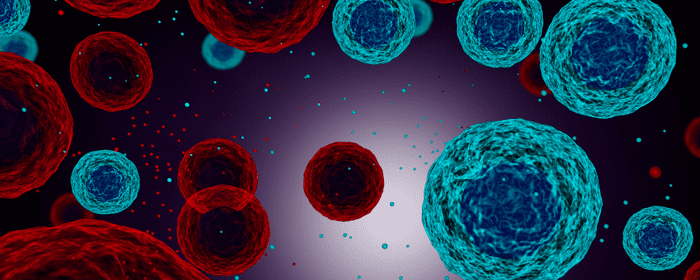

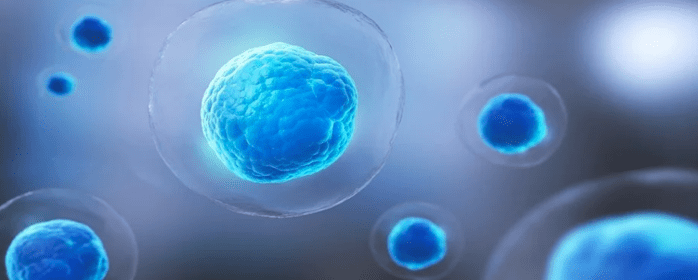
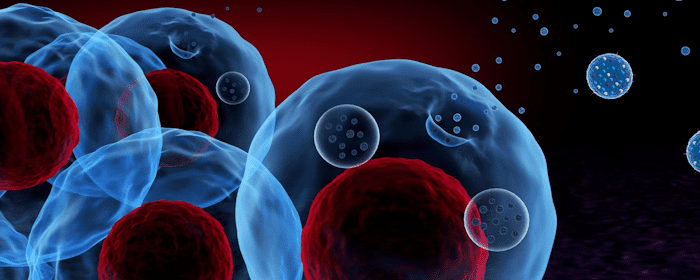
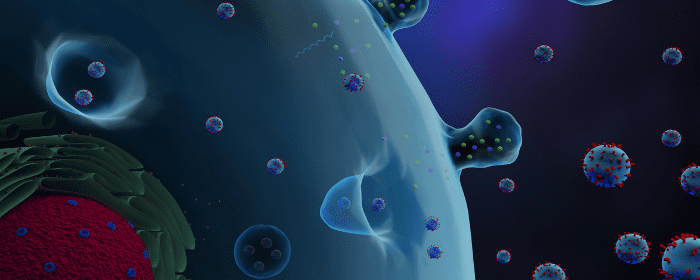

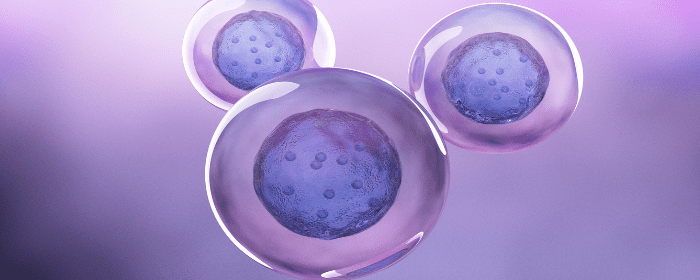
 St. Petersburg, Florida
St. Petersburg, Florida
